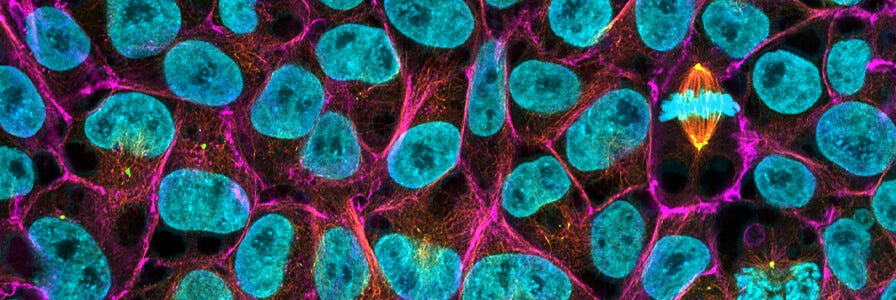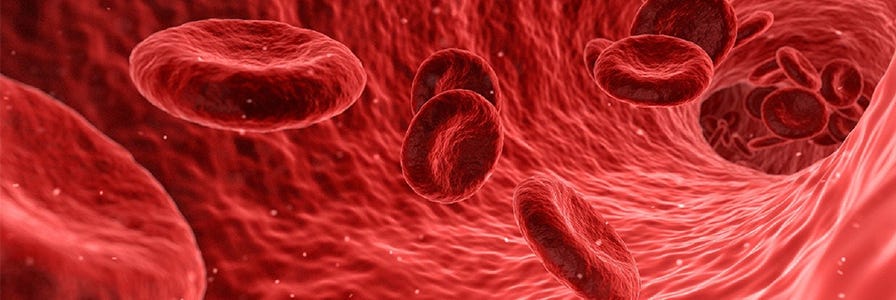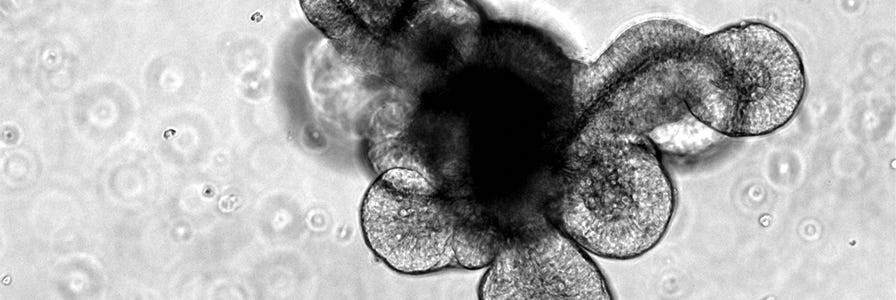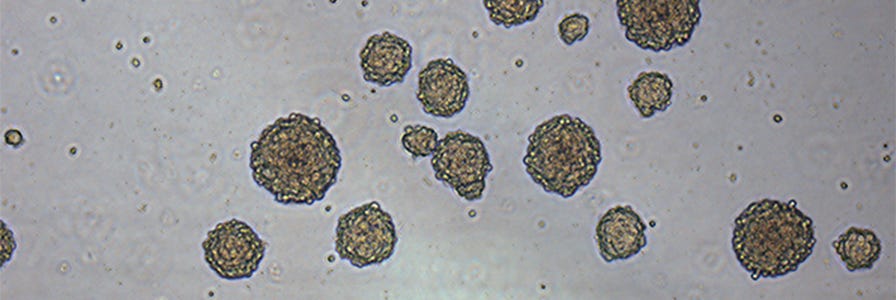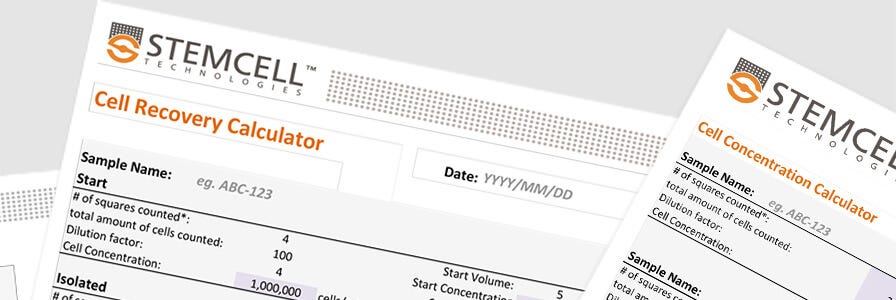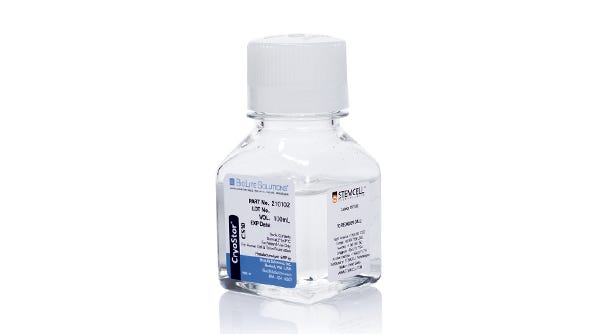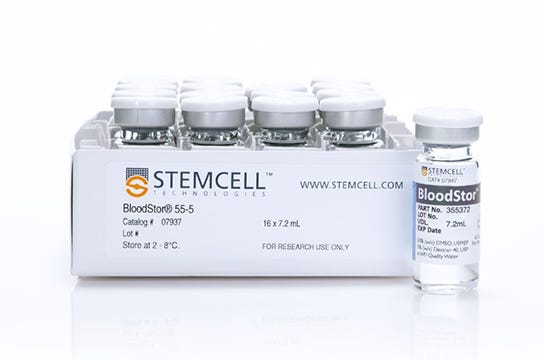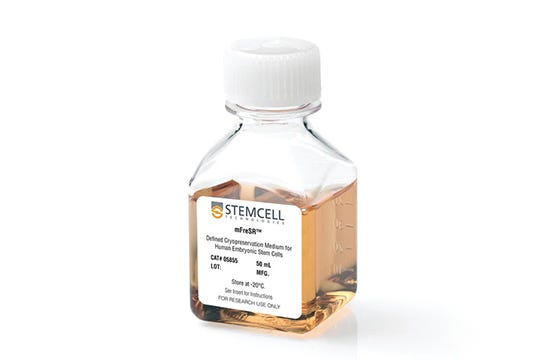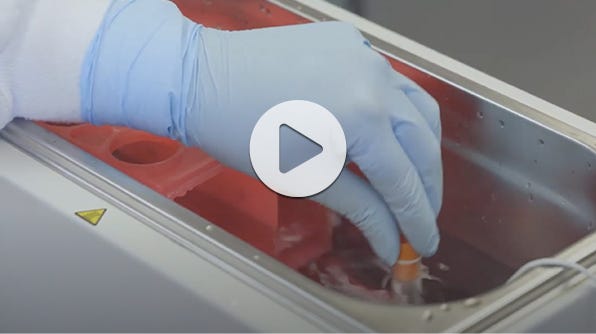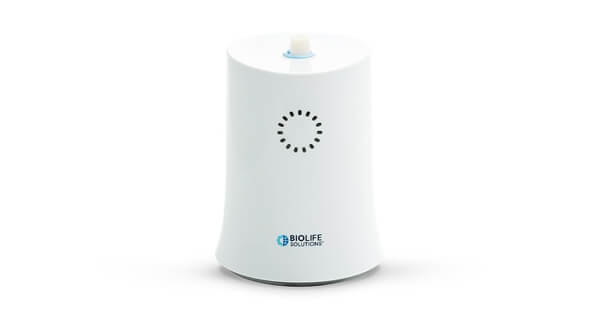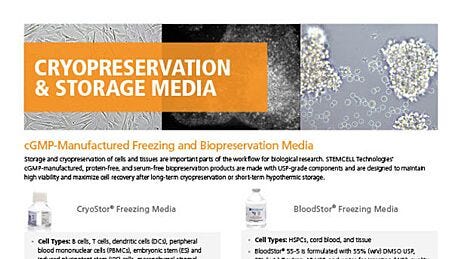Cryopreservation Basics: Protocols and Best Practices for Freezing Cells

Cryopreservation of cells and tissues is a vital component in biological research workflows. At low temperatures, biological and chemical reactions in living cells are dramatically reduced, a phenomenon widely exploited for the long-term storage of cells and tissues. Explore this page to learn the fundamentals of cell cryopreservation and to find best practices for freezing down your cells.
What Is Cryopreservation?
Cryopreservation is a process of using low temperatures to preserve cells and tissues for future use. This technique involves cooling cells to very low temperatures (-80˚C to -196˚C) and suspending their cellular metabolism, which preserves the cells for an indefinite amount of time. When water within cells freezes, the ice formation can cause a solute imbalance and damage the cellular structure. By using proper techniques and a freezing medium containing the right cryoprotectants and additives, researchers can maximize the post-thaw viability of cells for cell culture.
Why Should Researchers Freeze Their Cells?
Cryopreservation is a common practice in research labs. Although setting up your lab for cryopreservation may involve some initial investment, the benefits of freezing your cells far outweigh the costs associated with equipment and reagents. Here are some of the advantages of cryopreservation:
- Preserves established and quality-controlled cell lines for future use.
- Prevention of changes in cellular genetics due to continuous growth and cell passaging.
- Enables creation of working cell banks—essential for ensuring the long-term use of a cell line with reproducible results—and a source of backup cells in the case of contamination or loss of your cultures.
- Allows for the safe and convenient shipping of cell lines.
Overview of a General Cryopreservation Protocol
Store the cryogenic vials in an isopropanol-containing cryo-freezing container such as Nalgene® Mr. Frosty or an isopropanol-free container such as Corning® CoolCell® (Catalog #200-0642) and place them overnight in a -80°C freezer. This will allow the cells to freeze at approximately -1°C/minute, which is ideal for freezing most cell types. You can also opt to use a controlled rate freezer and store the vials directly at -80°C.
- Harvest the cells and centrifuge them. Remove the supernatant carefully.
- Resuspend the cells in a freezing media suitable for your cell type.
- A freezing media such as CryoStor® CS10 can be used for most cell types. You can also opt to use specialized media designed specifically for certain cell types. For instance, use mFreSR™ for freezing human embryonic and induced pluripotent stem cells (ES and iPS cells), MesenCult™-ACF Freezing Medium for mesenchymal stromal cells (MSCs), or STEMdiff™ Cardiomyocyte Freezing Medium for human pluripotent stem cell (hPSC)-derived cardiomyocytes. Find freezing media for different cell types >
- Aliquot the cell suspension into cryogenic vials, such as Corning® Cryogenic Vials (Catalog #100-0091, 100-0095).
- Store the cryogenic vials in an isopropanol-containing cryo-freezing container such as Nalgene® Mr. Frosty or an isopropanol-free container such as Corning® CoolCell® and place them overnight in a -80°C freezer. This will allow the cells to freeze at approximately -1°C/minute, which is ideal for freezing most cell types. You can also opt to use a controlled rate freezer and store the vials directly at -80°C.
- Transfer the cryogenic vials to a liquid nitrogen tank to store at -135°C.
Note: Short-term storage of cells (< 1 month) at -80°C is acceptable, but should be minimized to ensure maximum stability.

Figure 1. Typical Step-by-Step Cryopreservation Protocol
Different cells, depending on their biological make-up, may respond differently to a given cryopreservation protocol, which can affect post-thaw viability. This warrants the need for creating an optimized protocol for your cell type of interest. To ensure frozen cells obtained from different vials in a working cell bank generate reproducible results, researchers should adhere to the cryopreservation protocol strictly. Here are some protocols and technical tips for freezing specific cell types:
Cryopreservation of hPSCs
Explore tips on cryopreserving human ES or iPS cells using either mFreSR™, CryoStor® CS10, or FreSR™-S.
How to Cryopreserve PBMCs
Follow this protocol to learn how to successfully cryopreserve PBMCs using CryoStor® CS10 or a lab-made formulation.
How to Cryopreserve Intestinal Organoids
Find out how you can freeze mouse or human intestinal organoids using CryoStor® CS10.
How to Cryopreserve Neurospheres
Learn how to cryopreserve neurospheres using controlled rate freezing containers.
Explore all cryopreservation protocols and technical tips in the Methods Library.
Key Considerations and Best Practices for Cryopreservation of Cells
The success of cell freezing and preservation depends on many elements of the cryopreservation workflow. Besides using an optimized protocol and choosing the right cryopreservation media for the cell type of interest, researchers should keep the following best practices in mind when freezing their cell samples:
- Aseptic techniques: Use proper aseptic techniques to maintain sterile conditions while freezing your cells. It is a good practice to wipe down the outside of containers, such as flasks and freezing media vials, with 70% ethanol or isopropanol before opening them.
- Contamination-free cells: Prior to freezing, ensure that the cells are healthy and free of any microbial contamination. It is recommended to include mycoplasma testing in the pre-freezing workflow. Signs of culture contamination include media turbidity and color change, or morphological changes to the cells.
- Confluent cells: For best results, cells should be harvested during their maximum growth phase (or log phase) and should have greater than 80% confluency before freezing.
- Concentration of cells in a vial: The optimal concentration for freezing cells may vary depending on your cell type. While freezing cell suspensions at a very low concentration could lead to low cell viability after thawing1, a very high concentration could lead to undesirable cell clumping. Typically, the concentration of cells in the cryogenic vial is within a general range of 1x103 - 1x106 cells/mL.
Note: You should try freezing the cells at multiple concentrations to determine which concentration gives the desired viability, recovery, and functionality upon thawing.Cell Counting Resources
Access templates and resources designed to help you accurately count cells and measure cell viability.
- Cryopreservation media ingredients: Cryopreservation media ingredients can have a significant impact on banked cells and future experiments. Home-made freezing medium usually comprises a culture media containing fetal bovine serum (FBS) with a cryoprotectant such as dimethyl sulfoxide (DMSO). However, FBS contains undefined components and its use in freezing media raises concerns about lot-to-lot variability and the risk of transmitting potentially infectious agents.
Commercially available options, such as CryoStor® CS10 and mFreSR™, are DMSO-containing, ready-to-use cryopreservation media that provide a safe, protective environment for cells and tissues during the freezing, storage, and thawing processes. In highly regulated fields such as cell and gene therapy, it is recommended to use a GMP-manufactured, fully-defined cryopreservation media to ensure that the products are consistently produced and controlled according to quality standards. - Cooling rate: The rate at which cells are frozen can have a significant impact on their survival. Controlled-rate freezing, a method that involves a gradual cooling rate of -1°C/minute, before long-term storage can help maximize cell viability and integrity. Controlled-rate freezing can be achieved by using a controlled-rate freezer or by placing cryogenic vials in an isopropanol freezing container (e.g. Nalgene® Mr. Frosty) or an isopropanol-free container such as Corning® CoolCell® (Catalog #200-0642) and into a -80°C freezer to cool slowly overnight. In general, slow freezing and rapid thawing is considered to be the basic rule to follow in freezing and subsequently recovering cells.
- Proper storage: Opt for single-use, sterile cryogenic vials for storing your cells. It is preferable to use internal-threaded cryogenic vials to prevent contamination during filling or when stored in liquid nitrogen. Find sterile cryogenic vials >
For optimal performance in the long-term, store cryogenic vials in liquid nitrogen tanks (-135°C to -196°C).
Note: Cells kept at -80°C will degrade with time and, therefore, it’s not recommended for long-term storage. This decline in viability is dependent on cell type, exposure to thermal cycling, and transient warming events such as repeated opening of the freezer door. - Proper record keeping: To ensure traceability, label the cryogenic vials with all the appropriate information. Use printed cryo labels or a marker resistant to both alcohol and liquid nitrogen. It is also good practice to maintain an inventory of banked cells and record whenever a vial is added to or removed from storage. This will help ensure you maintain an adequate stock of frozen cells.
Templates and Checklists
Stay organized with this collection of tools, including reagent label templates, lab inventory spreadsheets, and cryo-storage organization templates.
Products to Support Your Cryopreservation Workflow
STEMCELL offers a wide selection of optimized freezing media that meets your cryopreservation needs for different types of stem cells. The portfolio includes the cGMP-manufactured, serum- and animal component-free CryoStor® and BloodStor® lines of products as well as chemically-defined, serum-free freezing media, such as mFreSR™.
BloodStor® 55-5
Looking for an optimized freezing medium for storing hematopoietic cells and tissues? Try BloodStor®, a cGMP-manufactured biopreservation reagent preformulated with 55% (w/v) DMSO.
Cell Types:
Stem cells isolated from umbilical cord blood, peripheral blood, bone marrow, and other biologics
mFreSR™
Achieve high thawing efficiencies by preserving your human ES and iPS cells using mFreSR™, a serum-free freezing medium compatible with mTeSR™1, TeSR™2, and mTeSR™ Plus.
Cell Types:
Human ES and iPS cells
STEMCELL also offers specialized media for freezing MSCs (MesenCult™-ACF Freezing Medium), neural progenitor cells (STEMdiff™ Neural Progenitor Freezing Medium), hPSC-derived cardiomyocytes (STEMdiff™ Cardiomyocyte Freezing Medium), as well as for single cell ES and iPS cells (FreSR™-S).
Thawing Your Cryopreserved Cells
For downstream processing, cryopreserved cells are first recovered by thawing. To decrease any impact on cellular recovery, it is recommended to thaw your cells rapidly. Rapid thawing helps reduce the exposure time to the solutes present in the freezing media and also minimizes any damage by ice recrystallisation.
Read More About Cell Thawing Methods
There are different methods/equipment for cell thawing, including water bath, bead bath, hand-warming, or specialized instruments such as the ThawSTAR® CFT2. Your thawing protocol may vary depending on your cell type, and it is recommended to refer to the protocol provided by your vendor. Here is a typical protocol for freezing frozen primary cell products using a 37°C water bath.
How to Thaw Frozen Primary Cells
Follow this step-by-step protocol to maximize cell viability and recovery when thawing frozen primary cells isolated from human blood or bone marrow.
Researchers looking for higher compliance and standardization may consider using the ThawSTAR® CFT2. This water-free, automated thawing system delivers cell thawing profiles similar to those of a water bath and can thaw your cells in ~2.5 minutes.
Standardize Your Cell Thawing Process
Increase confidence in your cell thawing workflow by ensuring consistent thawing performance with ThawSTAR® CFT2—a sensor-based automated thawing system.
Explore These Resources
- Terry C et al. (2010)Optimization of the cryopreservation and thawing protocol for human hepatocytes for use in cell transplantation. Liver Transpl 16(2): 229–37.
